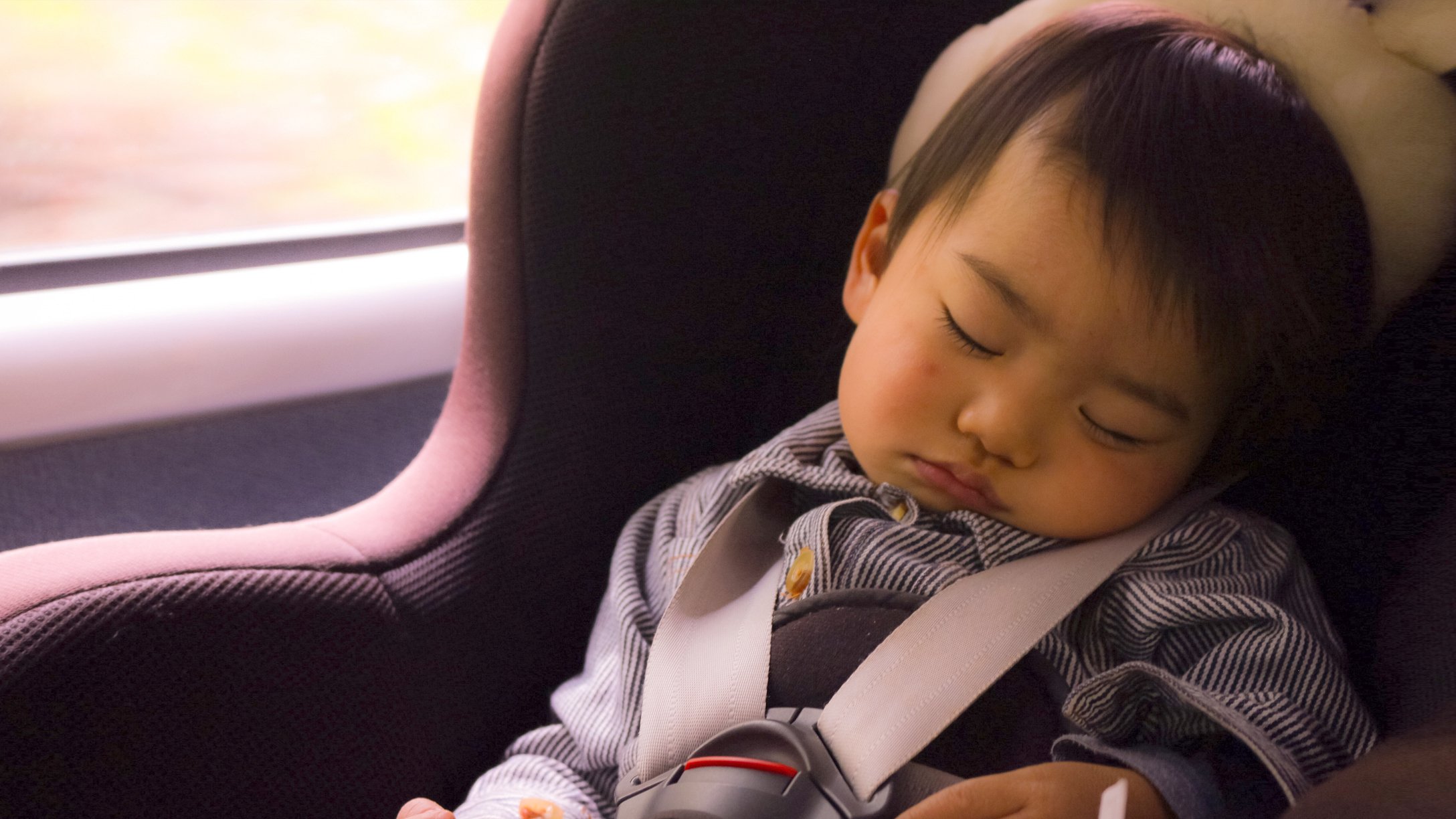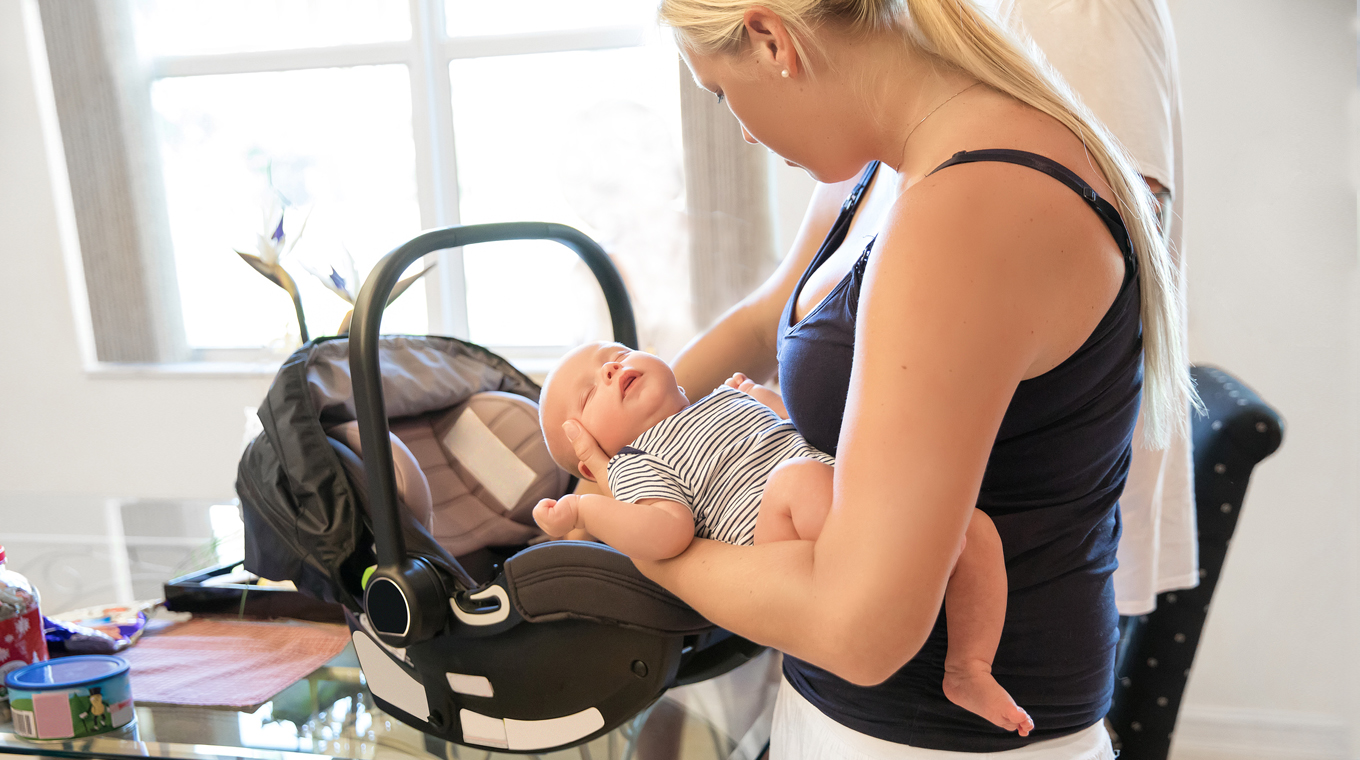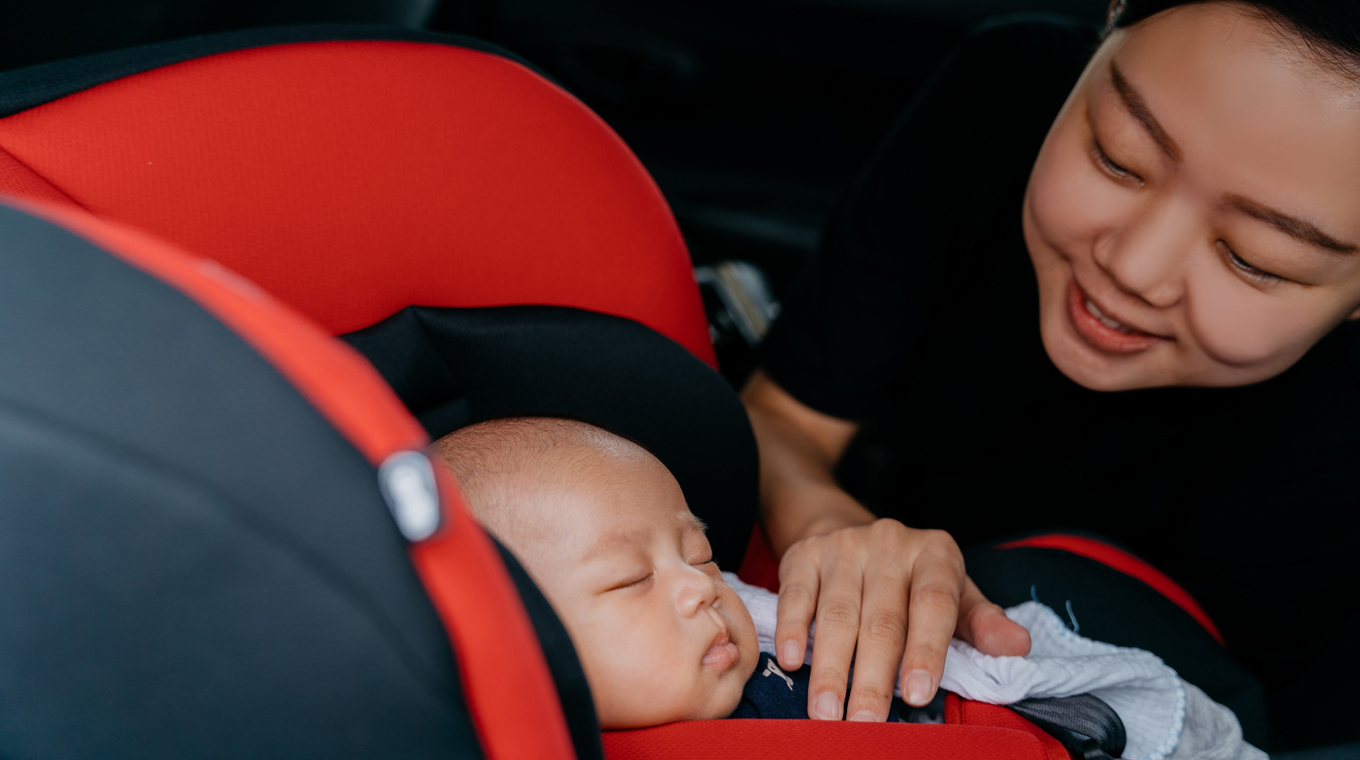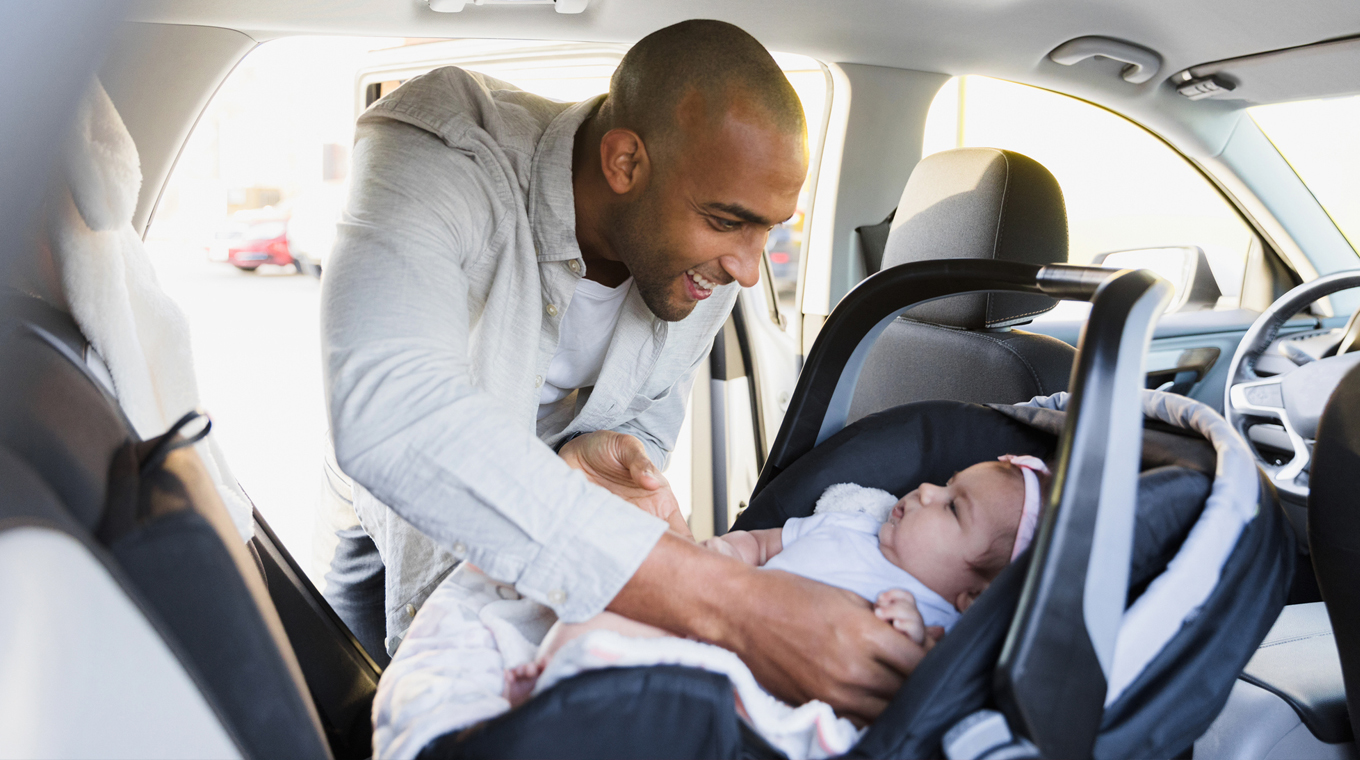
In this article
It's a common scene; parents bring baby home from the hospital or spend a family day out on the town, and the little one falls asleep in their car seat. Rather than risk waking up a sleeping baby, many will opt to remove the infant carrier from the car and let them sleep in it rather than transferring them to a crib or bassinette. After all, why would anyone willingly wake up a sleeping baby?
But, is that sliver of time to yourself while baby naps worth it? Experts say no. Read on to more about this and other car seat rules to help ensure the safety and well-being of your baby.
What is the 2-hour rule for car seats?

UK-based Lullaby Trust notes that car seat manufacturers and health care professionals recommend caregivers limit the car seat time to two hours in a 24-hour period. The American Academy of Pediatrics reminds caregivers that babies should not sleep in carriers or car seats and should be placed in a supine position for sleeping.
Leaving your baby in an upright position for too long can put a strain on the spine and potentially restrict airflow to the baby's lungs. In fact, a 10-year study of 11,700 sleep-related deaths in infants determined that 348 of those deaths occurred in a car seat or other sitting device.
2-hour rule baby travel tips

The 2-hour rule is one of those car seat rules you may not have heard of, but it does ensure baby safety. And while it aims to ensure your baby doesn't stay in one position for too long on long trips, there are things you can do to be sure the times your baby is sitting upright, they're as safe as can be. One easy way is to invest in a head support product to ensure your baby's head stays doesn't droop or flop to the side, thus restricting airflow. Many stroller/car seat travel systems already include head support in the infant seat, but good head supports can also be purchased separately.
Regardless of the accessories you use, research recommends you adhere to the 2-hour rule and allow for frequent breaks when traveling with an infant. This could mean stopping at a rest stop and getting your baby out of the seat and into the fresh air and a diaper change, or breaking up long road trips into multiple days rather than driving straight through.
"Before hitting the road, be prepared and know where gas stations and rest stops are on the way. In case you decide you need a longer break, it's a good idea to know where baby-friendly hotels are located," pediatrician Dina DiMaggio wrote for the American Academy of Pediatrics website, HealthyChildren.org.
"If you aren't sure there will be a safe sleep space at your destination, bring a bassinet or portable play yard with you, since it's not safe for your baby to sleep in the car seat once you arrive," DiMaggio advised.
Car seat rules: How to put baby your baby in a car seat

Before leaving the hospital, your newborn may undergo a car seat tolerance screening at which time nursing staff may demonstrate how to put your child in a car seat, but here are some general guidelines:
- Be sure the harness straps are in the lowest slots so the fit is snug
- Baby's bottom should be flush with the back of the seat
- Harness straps go over baby's shoulders, then fasten the chest clip
- Insert the metal buckles into their corresponding clips
- Give harness tail (at the base between baby's legs) a firm tug
- Ensure a finger-width space between baby and harness with straps at armpit level
- Slide the chest clip to approximately armpit level for optimal safety
Additional best practices when it comes to car seat safety include keeping your baby rear-facing until they reach the height and weight limits of a convertible seat. They can then be placed forward-facing until they outgrow those height or weight limits. Of course, all car seats and boosters should remain in the backseat until the child is 13 years old.
When temperatures cool down, there are additional care seat safety rules caregivers need to heed. Alicia Stephenson is a mom of two and Child Passenger Safety Technician (CPST) in South Carolina. Along with her business partner, she provides car safety seat assistance to caregivers in her local community. Stephenson reminds parents that bulky coats should never be worn by children in car seats.
"With cold weather comes heavy jackets which can be dangerous when used in a car seat. The extra padding in jackets quickly compresses during crash forces. This leaves extra slack in the harness which can allow the child to be ejected," Stephenson explained in her Lowcountry Car Seat Safety Facebook group."A general rule of thumb is that if [the coat] is thicker than fleece, it should be removed."
Parents and other caregivers with questions about car seat safety are encouraged to find a local CPST. Technicians are available to ensure car seats are installed correctly, or provide resources for families in need.




